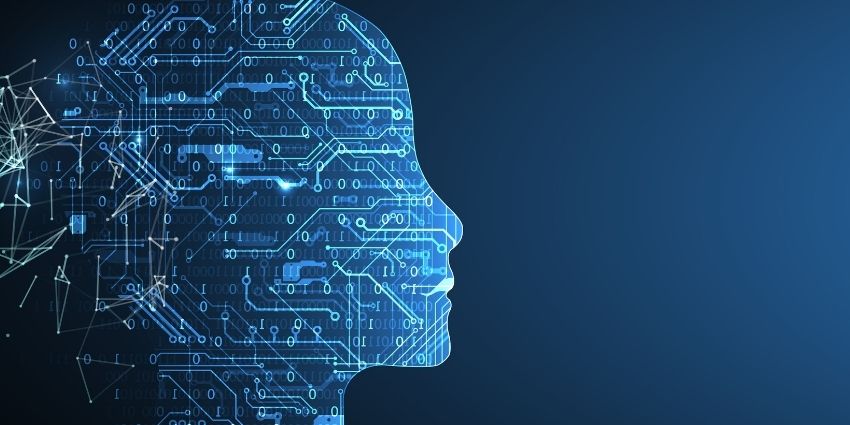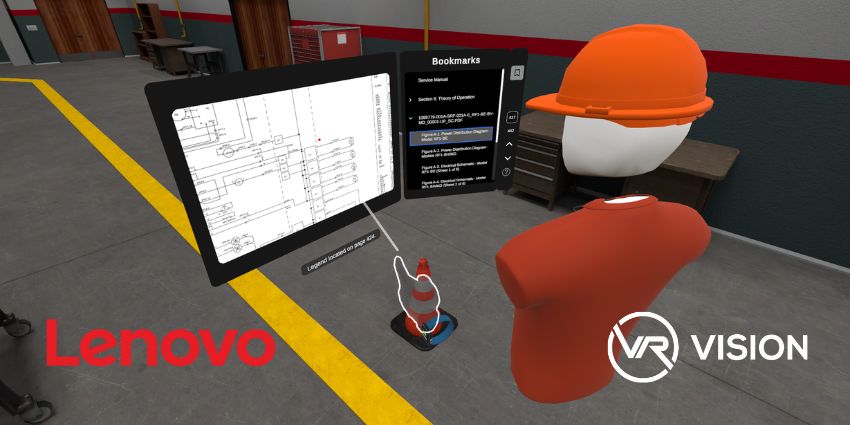Traditional corporate training has a lot of problems. It’s static, inflexible, and often struggles to keep up with the real changes happening in today’s workplaces. Just think about the fact that about 60% of the global workplace will need reskilling by 2030 (according to the World Economic Forum). That means your existing training strategies are probably already outdated.
AI in immersive training could be the solution. Already, immersive learning experiences, like metaverse training environments, VR simulations, and AR guides are driving massive ROI for teams. They’re accelerating the path to skill proficiency, reducing training costs, and boosting engagement.
Add AI into the mix, and suddenly you have a way to create and personalize content at scale, support every employee with a real-time human-like coach, and gather extra data from every experience. Here’s how AI in immersive training will change the future of employee development.
Understanding AI in Immersive Training
AI and immersive training are two terms you’re probably already familiar with. Artificial Intelligence is the umbrella term that applies to everything you can use to make training initiatives smarter. That includes generative AI tools for content creation, conversational AI coaching assistants, machine learning algorithms, even predictive analytics tools.
Immersive training is all about using XR technologies, like augmented, virtual, and mixed reality, and immersive software to make learning experiences more experiential. Think of VR training simulations where surgeons can practice procedures in real-time, or AR glasses that give engineers instant guidance and support as they learn on the job.
Already, both of these technologies are powering amazing learning outcomes, but together, they introduce a world of new opportunities. Let’s take a look at just some examples of how companies can use AI in immersive training:
Generative AI and Synthetic Media
Synthetic media refers to all kinds of AI-generated content. In the XR and immersive training space, that could include AI-generated courses, realistic digital twin environments, or human-like avatars that can simulate expressions and human behaviors (like the BodySwaps avatars)
Companies across industries are using AI to create the code, virtual environments, and even frameworks they need for flexible, personalized XR training initiatives. Plus, AI can help with streaming content to headsets too, as evidenced by the Medicalholodeck platform.
Natural Language Processing: For Human Interactions
NLP technologies built into immersive tools empower learners to interact with AI-driven systems naturally. They ensure employees can speak to an AI assistant using the microphone built into their Meta Quest 3 or Apple Vision Pro to complete tasks, or ask questions.
This technology, combined with other conversational AI tools also allows intelligent assistants in training modules to respond – offering real-time feedback and guidance. For instance, an engineer could ask an assistant a question about a machine and get guidance straight away, allowing them to learn and improve on the job.
Computer Vision and Data Recognition
Have you ever wondered how cutting-edge XR training apps can actually “see” what someone is doing, track their engagement levels, or adjust content in real-time. That’s where computer vision comes in. Using sensors, haptic feedback sensors, and tracking capabilities, XR tools can monitor all kinds of information about a person’s actions and surroundings.
This can enable more immersive, engaging training experiences, while also improving safety by ensuring employees don’t step out of pre-defined guardrails and safe areas.
Adaptive Learning Systems
One of the biggest benefits of AI in immersive training is that allows companies to personalize learning content dynamically. Adaptive learning systems use AI to tailor content to individual needs based on performance data, goals, role responsibilities, and other factors.
As an example, for customer-facing teams, Credit Agricole uses VR training and AI bots to give staff members real-time insights into how they can adjust their posture and tone, or make more intelligent decisions, improving training outcomes.
AI-Powered Virtual Avatars
Avatars can be particularly useful for training initiatives, either acting as virtual instructors or peers. For instance, you could have an avatar that mimics an angry customer to help train customer service teams on soft skills and issue resolution techniques.
Avatars give people access to authentic-feeling characters they can interact with, learn from, and collaborate with throughout the training process. This makes delivering human-level educational assistance at scale easier, without investing in endless educators or mentors.
AI in Immersive Training: Why Now?
Honestly, companies have been experimenting with ways to improve corporate training initiatives for a while now. Over the years, we’ve gradually transitioned from in-person education to online courses and training videos to immersive VR simulations, on-the-job AR training, and mixed reality experiences.
There are a few reasons for this shift. First, the workplace has evolved. Since the pandemic, remote and hybrid work strategies have accelerated. More distributed teams have made implementing traditional training strategies tougher, forcing a digital transformation.
As companies shifted to more scalable, digital training strategies, they discovered that online courses and self-paced learning didn’t always drive the most engagement. To make matters worse, many online courses are either generic or destined to become quickly outdated without constant work.
Studies have shown that this transition does make a difference. For instance, Stanford University found XR training can improve learning effectiveness by 76%.
But even with more flexible, accessible XR solutions emerging in the market, companies have had difficulty scaling their strategies, and personalizing content at scale. That’s where AI comes in, offering a quick, efficient, and cost-effective way to personalize content and support learners at scale.
AI in Immersive Training: More Accessible Than Ever
In the past, embedding AI in immersive training would have been complicated, expensive, and time-consuming. Now, everything is changing. XR hardware is more becoming more affordable, with intuitive devices like the Meta Quest 3 and 3S reducing endpoint costs for teams.
Software is becoming more affordable and accessible too. Companies have access to solutions like Varjo Teleport for creating digital twins, and no-code, low-code platforms for content creation. Even generative AI tools can create the code and assets needed for metaverse environments.
Plus, AI technologies are more accessible, with API access to models like ChatGPT, Google’s Gemini, and Microsoft Copilot. For instance, Google’s Android XR platform now makes it easier than ever for companies to build immersive learning experiences in the language or environment of their choice, and embed Gemini AI models simultaneously.
Plus, some companies in the service landscape are beginning to specialize in solutions explicitly focused on AI, and XR-powered educational content development.
All the while businesses are discovering measurable benefits from using AI and XR together. The US Air Force saved $13.4 million using immersive learning to train pilots. PwC found VR learners were 275% more confident applying their skills after immersive training. Even healthcare brands are discovering the benefits of combined AI, XR, and neural networks.
The Power of AI in Immersive Training
AI brings the brains. XR brings the environment. Together, they offer something unprecedented: smart, responsive, deeply human digital training. With AI in immersive training, you benefit from:
- Personalization at Scale: AI adapts scenarios in real time. Struggling with de-escalation techniques? The AI lowers the difficulty or changes the customer’s emotional state in your VR simulation. Acing every module? Then AI ups the challenge.
- Real-Time Guidance: AI-driven avatars act like coaches or clients, responding conversationally and offering feedback based on your tone, words, and gestures.
- Insight and Analytics: AI tracks your eye movements, hand motions, decisions, and timing, then offers data-rich reports showing where you shine and where to focus. These tools can even gather the insights needed to create better content in the future.
- Faster Development: Instead of taking months to develop XR content, generative AI tools can now build simulations, avatars, and training modules in days. Companies like Amazon and Walmart are already doing this, using AI to create immersive customer service simulations at scale.
- Higher Engagement: Immersive learning, with real-time AI guidance and interactivity, changes people’s emotional connection with training. Higher engagement leads to better knowledge retention and improved training outcomes.
It’s the ultimate way to build the training experience of the future, one that adapts and scales to the real-world needs of today’s businesses.
The Future of Training with AI and XR
Separately, artificial intelligence and extended reality are already reshaping the enterprise training landscape. Together, they introduce a brand-new way to create personalized, adaptive, and scalable experiences that align with the needs of every workforce.
Combining XR with cutting-edge AI technology could be the key to finally overcoming the skill gaps in modern workplaces. It will finally replace static and limited educational content with immersive experiences that drive real results.







